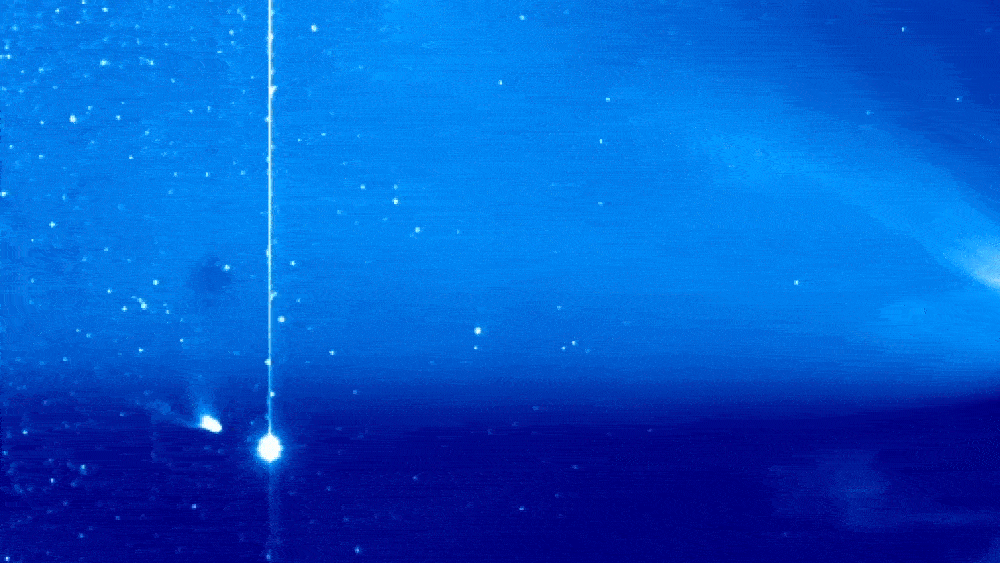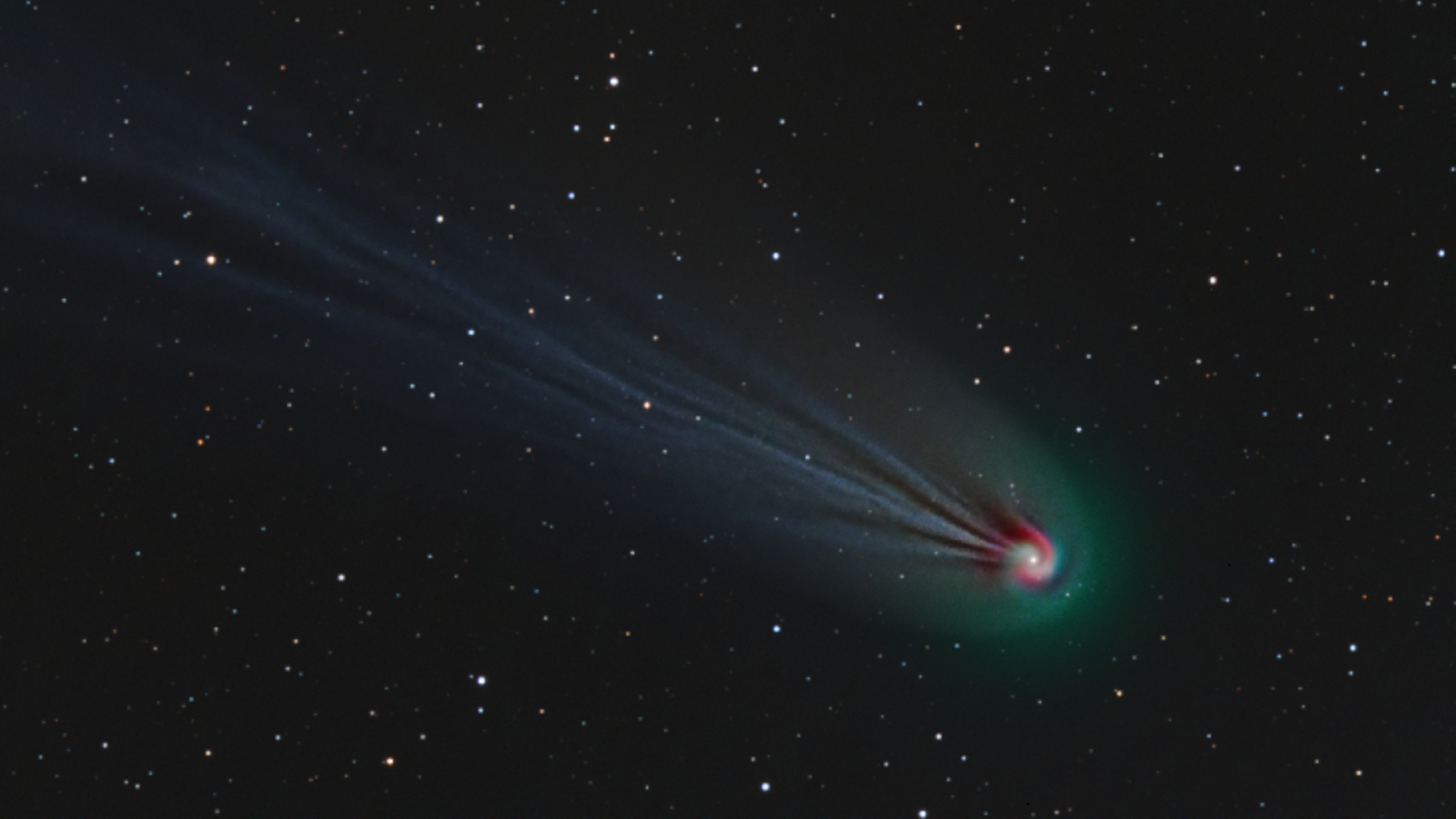See the explosive 'devil comet' get its tail ripped off by a solar storm days before its close approach to the sun
A surprise coronal mass ejection recently smashed into Comet 12P/Pons-Brooks, briefly causing the "devil comet" to lose its tail — and a NASA spacecraft caught the whole thing on camera.

The explosive "devil comet" has been blasted by a gigantic plasma wave from the sun, which temporarily blew away its dusty tail. A NASA spacecraft captured the epic encounter in a new video, which also features a cameo of a distant Jupiter.
Comet 12P/Pons-Brooks (12P) is a green cryovolcanic comet with a nucleus measuring 10.5 miles (17 kilometers) across. It occasionally erupts, shooting an icy mixture of gas and dust into the solar system whenever it soaks up too much of the sun's radiation. When this happens, its coma — the cloud of particulates that surrounds the nucleus — expands and becomes much brighter. In the past, this bright cloud has been misshaped from within, giving the comet a "pair of horns" that earned it its sinister nickname. However, these horns have been absent from recent outbursts.
12P orbits the sun once roughly every 71 years on a highly elliptical, or stretched, trajectory. As a result, the comet spends most of its life in the outer reaches of our cosmic neighborhood, out of sight from our telescopes. However, it is currently making its last dash toward the sun and will reach its closest point to our home star, known as perihelion, on Sunday (April 21). It will then slingshot around our home star and back out toward the edge of the solar system — if it isn't first burned up by the close encounter.
On April 12, the comet was bashed by a massive cloud of plasma known as a coronal mass ejection (CME) that exploded from the sun without warning, Spaceweather.com reported.
The incident likely triggered a disconnection event, in which the comet's dusty tail was temporarily blown away by the solar storm, video footage captured by NASA's Solar Terrestrial Relations Observatory A (STEREO-A) spacecraft shows. In the new footage, 12P also appears to be moving close to Jupiter (even though the two bodies are millions of miles apart).
Photos from April 9 also show a kink in the comet's tail, was likely caused by another previous disconnection event, Live Science's sister site Space.com reported.
Get the world’s most fascinating discoveries delivered straight to your inbox.

Disconnection events are rare but become more likely the closer a comet gets to the sun. A similar thing happened to Comet Nishimura in September 2023, when a CME blew away the comet's tail as it slingshotted around the sun — just like 12P will do this week. And in January 2023, an astrophotographer captured time-lapse footage of the same thing happening to the green comet C/2022 E3.
This is not the first time 12P has been spotted in proximity to another celestial body on its journey through the inner solar system. The explosive comet has also been photographed flying past the crimson-colored Crescent Nebula in January and was livestreamed as it zoomed past the Andromeda galaxy in March.
There were also hopes that 12P might make an appearance during the recent total solar eclipse. However, it proved to be extremely difficult to spot as the moon temporarily blocked out our home star.
If you want to see 12P for yourself, now is the best time to do so. From across the U.S., the comet should be visible to the naked eye low in the west about an hour after sunset over the next few nights.
You can check TheSkyLive.com to know exactly where to look. Using a pair of good stargazing binoculars will boost your chances of seeing the comet before it disappears for another seven decades.
Editor's note: This article was updated on April 23 to mention a previous disconnection event that also impacted the comet's tail.

Harry is a U.K.-based senior staff writer at Live Science. He studied marine biology at the University of Exeter before training to become a journalist. He covers a wide range of topics including space exploration, planetary science, space weather, climate change, animal behavior and paleontology. His recent work on the solar maximum won "best space submission" at the 2024 Aerospace Media Awards and was shortlisted in the "top scoop" category at the NCTJ Awards for Excellence in 2023. He also writes Live Science's weekly Earth from space series.
